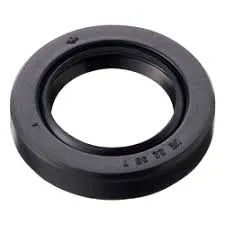9 月 . 01, 2024 17:58 Back to list
Rocker Valve Cover Gasket | High-Quality Engine Seals
The rocker valve cover gasket plays a crucial role in the overall functioning of an internal combustion engine. It acts as a seal between the engine’s rocker cover and the cylinder head, preventing oil leaks and ensuring optimal performance. Understanding the significance of this component and knowing how to maintain it can contribute vastly to the longevity and efficiency of your vehicle.
First, let’s delve into the primary function of the rocker valve cover gasket. Within an engine, the rocker cover houses vital components, including the rocker arms, valves, and pushrods. As oil circulates through the engine, it lubricates these parts, reducing friction and heat buildup. The gasket forms a barrier that keeps the oil contained within the rocker cover, preventing it from leaking out. A deteriorated or damaged gasket can lead to oil leaks, which may not only result in lower oil levels but can also lead to more severe engine problems down the line.
Several factors can contribute to the wear and tear of a rocker valve cover gasket. Over time, exposure to heat, oil, and engine vibrations can cause the gasket material to degrade. Additionally, improper installation or the use of subpar replacement gaskets can exacerbate the problem. It’s important to inspect the gasket regularly and replace it as needed to avoid further complications.
rocker valve cover gasket

Identifying issues with the rocker valve cover gasket usually starts with recognizing the symptoms of a leak. Common signs include oil spots under the vehicle, visible oil leaking from the rocker cover, or an oil smell inside the engine bay. In some cases, a malfunctioning gasket can cause oil to enter the combustion chamber, leading to blue smoke from the exhaust. If you notice any of these symptoms, it’s advisable to have the gasket inspected and replaced if necessary.
Replacing a rocker valve cover gasket is a task that can often be performed by a DIY enthusiast, provided they have the right tools and knowledge. The first step involves removing any components that obstruct access to the valve cover, such as the air intake system or ignition coils. Once the valve cover is exposed, the old gasket can be removed, and the surface cleaned to ensure a proper seal for the new gasket. After placing the new gasket, reassemble the components and check for leaks after running the engine.
In summary, the rocker valve cover gasket is an essential component of an engine’s operation. Regular maintenance and timely replacement can prevent oil leaks and contribute to the overall health of your vehicle. By being proactive and attentive to the signs of a failing gasket, vehicle owners can save themselves from costly repairs in the future. Ultimately, understanding and caring for this small but significant part can lead to a more efficient, reliable, and long-lasting engine.